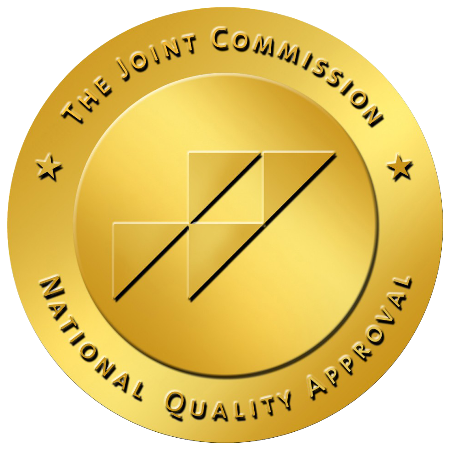11 Criteria for Substance Use Disorders
Symptoms of Addiction

There are 11 criteria for substance use disorders, defined by the American Psychiatric Association (APA).
Substance use disorders (SUD) are a condition recognized by the National Institute of Mental Health (NIMH). Even if it’s legal substances like cigarettes and alcohol or illicit drugs, SUDs are behavioral disorders that make people unable to control their use of substances.
Recognizing the criteria for substance use disorders makes diagnosing and treating addiction more comprehensive and likely to succeed long-term.
You do not have to meet all 11 criteria to be diagnosed with a substance use disorder, and more than one SUD can be present at once.
The number of criteria met will determine how severe the substance use disorder is and the type of treatment you will need to overcome your addiction.
Diagnosing Substance Use Disorders
Healthcare professionals have standard, official criteria to diagnose substance use disorders.
The American Psychiatric Association (APA) established the Diagnostic and Statistical Manual of Mental Disorders (DSM). It is used for mental health professionals in the United States to have a standardized way of diagnosing and treating disorders.
Before the DSM, no standard diagnostical and statistical manual was used nationwide, leading to missed and incorrect diagnoses.
The DSM is now considered the holy grail of recognizing, documenting, diagnosing, and treating mental health and behavioral disorders.
The DSM is only revised and updated when there is a consensus throughout the American Psychiatric Association that it has become outdated or needs to expand to include new health information.
The updates are based on decades of research and peer-reviewed, scientifically accurate studies, then debated by APA members before acceptance.
The latest version is the fifth edition, referred to as the DSM-5, published in 2013.
The DSM-5 has updated and extensive criteria regarding substance use disorders and substance dependence disorders. The previous edition, DSM-IV, published in 1994, was limited in that area.
Currently, the DSM-5 has 11 criteria to diagnose substance misuse, substance abuse disorders, and updated evidence-based treatment recommendations.

DSM-5 Substance Use Disorder Criteria
The DSM-5 has 11 criteria, or symptoms and behaviors, used to diagnose substance use disorders and their severity.
Depending on how many substance use disorder symptoms you display, you will be considered mild, moderate, or severe. However, being honest with the person assessing you is essential to establishing a proper diagnosis and an appropriate treatment plan.
Two or more of the criteria within a 12-month time frame clinically qualify as a substance use disorder. According to the DSM-5, the 11 criteria for substance use disorders include:
- Cravings – You have experienced strong urges to use the substance, and sometimes it is all you can think about.
- Tolerance – You have to use more of the substance to feel the desired effect lower doses gave you when you first started taking it.
- Using larger amounts longer – You end up taking more significant amounts or using for more extended periods than you intended.
- Giving up activities to use – You have stopped participating in or skipped recreational activities and hobbies to use more.
- More time spent using – You spend a large portion of your time getting, using, or recovering from using the substance.
- Neglecting obligations – You have failed to keep commitments to schools, jobs, or loved ones.
- Social or interpersonal problems related to use – You continue to use despite recurring conflicts and fights socially and personally.
- Physical or psychological problems related to use – You have developed physical or mental health problems directly related to the substance use and continue to use it regardless.
- Dangerous use – You use the substance in dangerous places or risky situations.
- Inability to control or quit use – You want to cut down or stop using the substance but haven’t been able to after repeated attempts.
- Withdrawal – You experience withdrawal symptoms when you stop using.

The Three Levels of Severity
The DSM-5 gives healthcare professionals guidelines to determine how severe and advanced a substance use disorder is, based on the number of criteria and their frequency.
- One criterion out of the eleven met indicates that a person could be at risk of developing a substance use disorder.
- Two to three of the criteria met indicate a mild substance use disorder.
- Four to five of the criteria met indicate a moderate substance use disorder.
- Six or more of the criteria met indicate a severe substance use disorder.
The National Institute on Drug Abuse (NIDA) recognizes addiction as the most severe form of a substance use disorder.
Types of Substance Use Disorders
The DSM-5 classifies each substance use disorder as an individual disorder, even when people are addicted to multiple substances at once.
There are eight types of substance use disorders recognized in the DSM-5, including:
- Alcohol use disorder
- Opioid use disorder
- Stimulant use disorder
- Cannabis use disorder
- Hallucinogenic use disorder
- Inhalant use disorder
- Tobacco use disorder
- Sedative, hypnotic, or anxiolytic use disorder
Most people struggling with substance use disorders require professional help to manage and overcome them. Distinguishing individual substance use disorders helps professionals give the correct treatments.

Substance Use Disorder Treatment
If you, a loved one, or a family member struggle to control your substance use, help is available. It is essential to understand and accept that substance use disorders are like any other chronic disease. Without treatment, they will continue to worsen and be fatal.
No matter where you are in your alcohol or drug addiction, you do not have to get worse before taking steps to get better and repair the damage substance abuse has done to your life. We are here to help.
At Northridge Addiction Treatment Center, we use evidence-based treatments and therapies, collaborating with you to create a unique plan specifically tailored to your rehabilitation needs.
Our professional, licensed, and multidisciplinary staff at NATC works closely with you throughout your entire stay, integrating proven behavioral therapies such as cognitive-behavioral therapy (CBT), dialectical behavior therapy (DBT), and 12 step facilitation therapy into your treatment.
Our residential treatment program gives you a calm and peaceful place with onsite chef-catered meals surrounded by the beautiful mountains of the San Fernando Valley to allow you to recover and gain the skills to lead you to a meaningful and life-long recovery.
Our expert admissions team is eager to help you navigate this journey and answer any questions you may have. Reach out today and take the first steps to recovery and thriving.
Find Meaningful Recovery
Our caring and compassionate specialists are eager to help you comfortably navigate this journey to recovery. Our individualized treatment plan, programs, and therapies may be a perfect match for you or your loved one. Let us assist you in living the happy life you deserve. It starts with a phone call.



